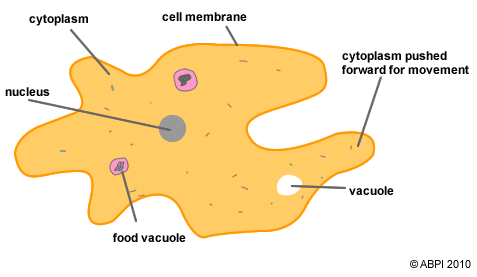Protozoa
Protozoa are large, single-celled organinsms. Perhaps the most famous protozoa, the amoeba, can be up to 1 mm in size (gigantic for a single cell).
The protozoa that cause parasitic infections in humans are usually in the size range of 1-100 micrometres (millionths of a metre) and have two stages in their life cycle. Infection is usually spread by structures called cysts which are cells that have secreted a protective layer around them so that they can survive the journey from one host to the next. Once inside the new host, these cysts develop into the active protozoa which grow, reproduce and cause symptoms of disease in the new host.
Protozoa cause a number of human diseases. The best known is malaria, but they also cause one form of dysentery and also sleeping sickness.
Not all protozoa are harmful to humans. Modern sewage treatment works actually use some protozoa to help digest the raw sewage so that it can be dispersed safely into the sea.
The structure of protozoa
There are many different types of protozoa and some of them have very complex structures. But all of the protozoa have some structures in common. These include:
- Cell membrane
surrounds the cytoplasm and controls the movement of substances into and out of the cell - Nucleus
contains the genetic material which controls the cell activities and reproduction - Cytoplasm
liquid gel in which many of the chemical reactions of the cell take place - Vacuole
membrane lined, fluid filled space in the cytoplasm which may be used for water balance or feeding

An amoeba – a simple protozoan















